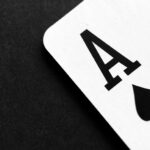Artificial Intelligence (AI) transforms how we create and interact with art. As you embark on your journey of how to generate AI art, it’s essential to understand the basics and the nuances involved in this innovative field. Here’s a guide to get you started.
Understanding AI and Its Role in Art
AI art involves using algorithms to create or enhance artwork. This technology can analyze existing art styles, learn from them, and then apply them to new creations. AI art blurs the line between human creativity and technological innovation, offering a new perspective on what it means to create art.
AI art is not just about the technology but also the creative process. Artists need to have a clear vision of what they want to achieve. They should guide the AI, merging their artistic sensibilities with the algorithm’s capabilities. This collaboration results in unique pieces reflecting human creativity and AI’s advanced techniques.
Tools and Software for AI Art
There are various tools and software available for creating AI art. Some are user-friendly for beginners, while others offer advanced features for experienced artists. When choosing a tool, consider its compatibility with your skills and the type of art you want to create. Some popular tools include DeepArt, Prisma, and Google’s DeepDream. Each of these offers different styles and levels of control over the final artwork.
Understanding the software’s capabilities is crucial. Some tools are great for abstract art, while others excel in realistic imagery. Experimenting with different tools can help you find the one that best suits your artistic vision.
Legal and Ethical Considerations
When creating AI art, it’s important to be aware of legal and ethical considerations. Intellectual property rights can be complex in AI art. Artists should ensure they have the rights to any images or styles they feed into the AI. It’s also important to credit any sources of inspiration or base artwork used in your creations.
Ethically, artists should consider the impact of AI on traditional art forms. Balancing technology with human creativity is key. Respecting the work of traditional artists while exploring new possibilities with AI is essential for maintaining a harmonious art community.
The Creative Process in AI Art
The creative process in AI art is different from traditional art forms. Artists must think about how to instruct the AI, what inputs to provide, and how to interpret the results. This process can be iterative, with several adjustments to achieve the desired outcome.
Artists should embrace experimentation. AI can produce unexpected results, which can be a source of inspiration. Learning to work with these surprises is part of the journey in AI art creation.
Marketing and Selling AI Art
Marketing and selling AI art presents unique challenges and opportunities. The novelty of AI art can be a selling point, but it’s important to convey the artistic value behind the technology. Social media platforms, online galleries, and digital art exhibitions effectively showcase AI art.
Understanding your audience is key. Some people are fascinated by the technology behind AI art, while others are more interested in the story or emotion conveyed by the artwork. Tailoring your marketing approach to your audience can increase the appeal of your AI art.
According to Adobe, “Generative AI gives everyone the power to create beautiful images. Whether you’re a trained artist or complete beginner, you can use AI to brainstorm ideas, explore new creative directions, or just turn a dream you had into a picture.”
Starting with AI art requires understanding the technology, choosing the right tools, and being aware of legal and ethical implications. The creative process in AI art is unique, offering a blend of technological innovation and human creativity. As you learn how to generate AI art, remember that this journey is about exploration and discovery, where the boundaries of art are constantly being redefined.







